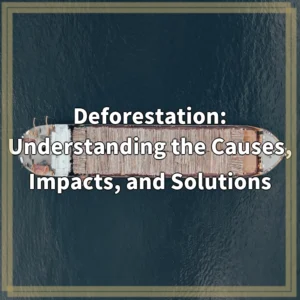
Carbon Sequestration: Delving Into the Power of Nature’s Climate Solution
What is Carbon Sequestration?
Carbon sequestration refers to the process by which carbon dioxide (CO2) is captured and stored, preventing it from being released into the atmosphere. This natural or artificial process helps to mitigate climate change by reducing greenhouse gas emissions and stabilizing the global carbon cycle.
Exploring the Topic
Carbon sequestration can occur through various methods, including:
1. Natural Carbon Sequestration
Natural carbon sequestration primarily takes place through photosynthesis, where plants absorb CO2 from the air and convert it into organic matter through the process of photosynthesis. This organic matter is then stored in vegetation, soils, and oceans, effectively removing CO2 from the atmosphere.
2. Artificial Carbon Sequestration
Artificial carbon sequestration involves the implementation of technologies that capture CO2 emissions from industrial processes, such as power plants and factories. These technologies can then store the captured CO2 in underground geological formations, such as depleted oil and gas reservoirs or deep saline aquifers, preventing its release into the atmosphere.
Case Studies or Examples
Despite the potential benefits of carbon sequestration, there are several real-world challenges associated with its implementation:
1. Scalability
One of the main challenges is scaling up carbon sequestration technologies to make a significant impact on reducing greenhouse gas emissions. Developing large-scale projects and ensuring their efficiency, cost-effectiveness, and long-term viability is an ongoing concern.
2. Monitoring and Verification
Accurately monitoring and verifying the amount of carbon dioxide being captured and stored is vital for carbon sequestration projects. Establishing robust measurement protocols and methodologies is essential for maintaining credibility and ensuring the effectiveness of these initiatives.
3. Environmental Impacts
The environmental impacts of carbon sequestration methods need to be carefully evaluated. For example, in the case of artificial carbon sequestration, the potential risks of CO2 leakage from storage sites and its impact on groundwater quality need to be thoroughly assessed.
4. Cost and Financing
Carbon sequestration technologies often require substantial investment, which can pose financial challenges. Finding sustainable funding mechanisms, such as carbon credit markets and government support, is crucial to incentivize the adoption of these technologies on a larger scale.
5. Long-Term Storage
Ensuring the long-term stability and integrity of carbon storage sites is essential. Proper site selection, ongoing monitoring, and maintenance are crucial to prevent CO2 leakage and ensure the sustained sequestration of carbon dioxide over time.
In conclusion, carbon sequestration holds great promise as a nature-based and technological approach to mitigate climate change. While it offers a potential solution to reducing greenhouse gas emissions and stabilizing the global carbon cycle, addressing the real-world challenges associated with its implementation is paramount to maximize its effectiveness in tackling climate change.

Solutions for Carbon Sequestration Challenges
1. Scalability
To overcome scalability challenges, it is crucial to invest in research and development to improve the efficiency and cost-effectiveness of carbon sequestration technologies. Collaboration between governments, industries, and research institutions can drive innovation and accelerate the deployment of large-scale projects.
2. Monitoring and Verification
Establishing standardized protocols and guidelines for monitoring and verifying carbon sequestration projects is essential. This includes the development of accurate measurement techniques and the implementation of robust reporting mechanisms to ensure transparency and accountability.
3. Environmental Impacts
Addressing environmental impacts requires a comprehensive assessment of potential risks and mitigation strategies. Implementing rigorous environmental monitoring programs and ensuring adherence to strict regulatory frameworks can help minimize the potential negative effects of carbon sequestration activities.
4. Cost and Financing
To address cost and financing challenges, governments can provide incentives such as tax breaks or subsidies for carbon sequestration projects. Building partnerships between public and private sectors and exploring innovative financing mechanisms can also help attract investment and make carbon sequestration more financially viable.
5. Long-Term Storage
Ensuring the long-term stability and integrity of carbon storage sites requires ongoing monitoring and maintenance. Developing robust protocols for site selection, conducting regular inspections, and implementing proper leakage prevention measures can help ensure the longevity and reliability of carbon storage projects.
In conclusion, addressing the challenges associated with carbon sequestration necessitates a multi-faceted approach involving technological advancements, policy support, and international collaboration. By implementing these solutions, we can unlock the full potential of carbon sequestration as a powerful tool to combat climate change and create a more sustainable future.















